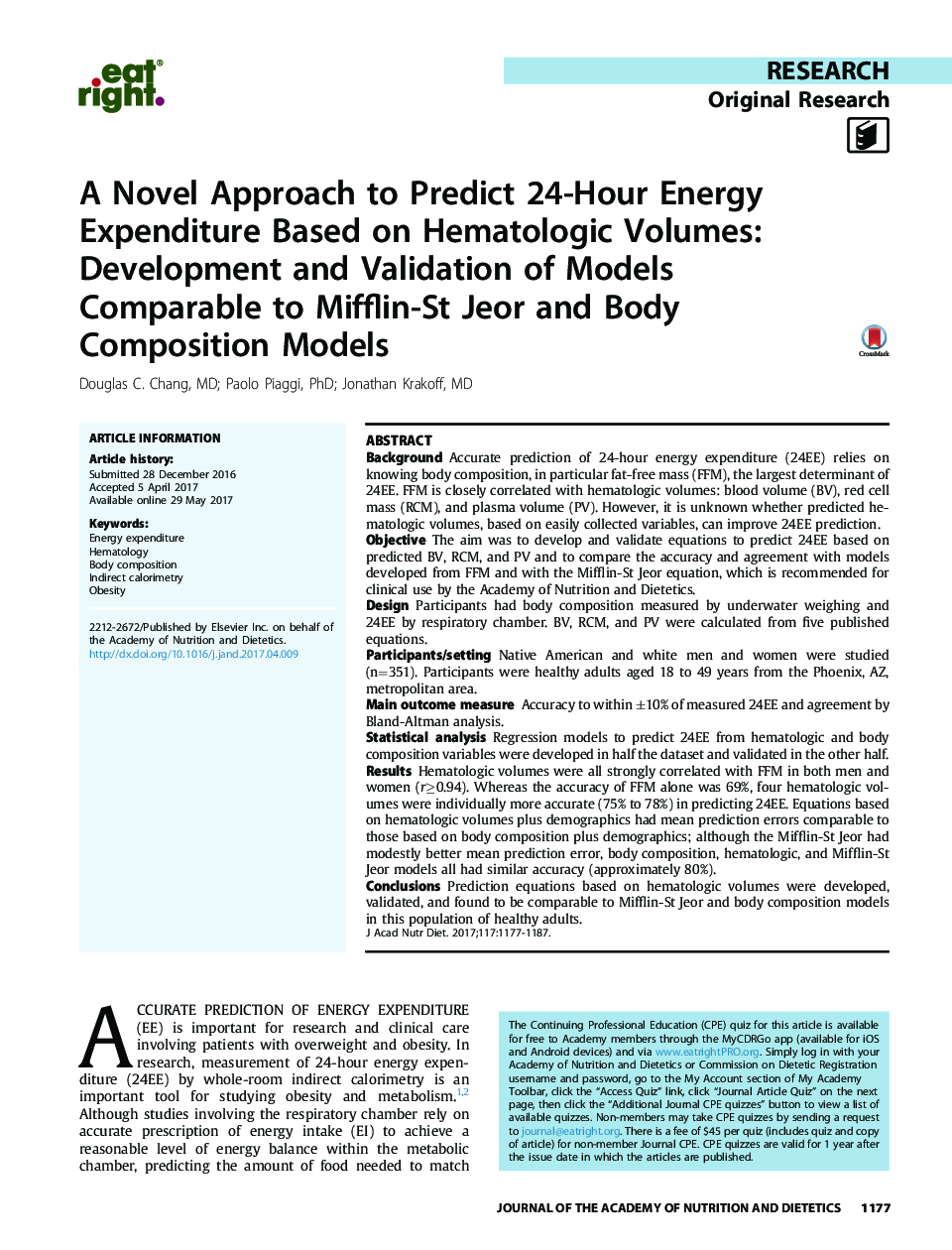| کد مقاله | کد نشریه | سال انتشار | مقاله انگلیسی | نسخه تمام متن |
|---|---|---|---|---|
| 5568989 | 1564021 | 2017 | 11 صفحه PDF | دانلود رایگان |
BackgroundAccurate prediction of 24-hour energy expenditure (24EE) relies on knowing body composition, in particular fat-free mass (FFM), the largest determinant of 24EE. FFM is closely correlated with hematologic volumes: blood volume (BV), red cell mass (RCM), and plasma volume (PV). However, it is unknown whether predicted hematologic volumes, based on easily collected variables, can improve 24EE prediction.ObjectiveThe aim was to develop and validate equations to predict 24EE based on predicted BV, RCM, and PV and to compare the accuracy and agreement with models developed from FFM and with the Mifflin-St Jeor equation, which is recommended for clinical use by the Academy of Nutrition and Dietetics.DesignParticipants had body composition measured by underwater weighing and 24EE by respiratory chamber. BV, RCM, and PV were calculated from five published equations.Participants/settingNative American and white men and women were studied (n=351). Participants were healthy adults aged 18 to 49 years from the Phoenix, AZ, metropolitan area.Main outcome measureAccuracy to within ±10% of measured 24EE and agreement by Bland-Altman analysis.Statistical analysisRegression models to predict 24EE from hematologic and body composition variables were developed in half the dataset and validated in the other half.ResultsHematologic volumes were all strongly correlated with FFM in both men and women (râ¥0.94). Whereas the accuracy of FFM alone was 69%, four hematologic volumes were individually more accurate (75% to 78%) in predicting 24EE. Equations based on hematologic volumes plus demographics had mean prediction errors comparable to those based on body composition plus demographics; although the Mifflin-St Jeor had modestly better mean prediction error, body composition, hematologic, and Mifflin-St Jeor models all had similar accuracy (approximately 80%).ConclusionsPrediction equations based on hematologic volumes were developed, validated, and found to be comparable to Mifflin-St Jeor and body composition models in this population of healthy adults.
Journal: Journal of the Academy of Nutrition and Dietetics - Volume 117, Issue 8, August 2017, Pages 1177-1187
